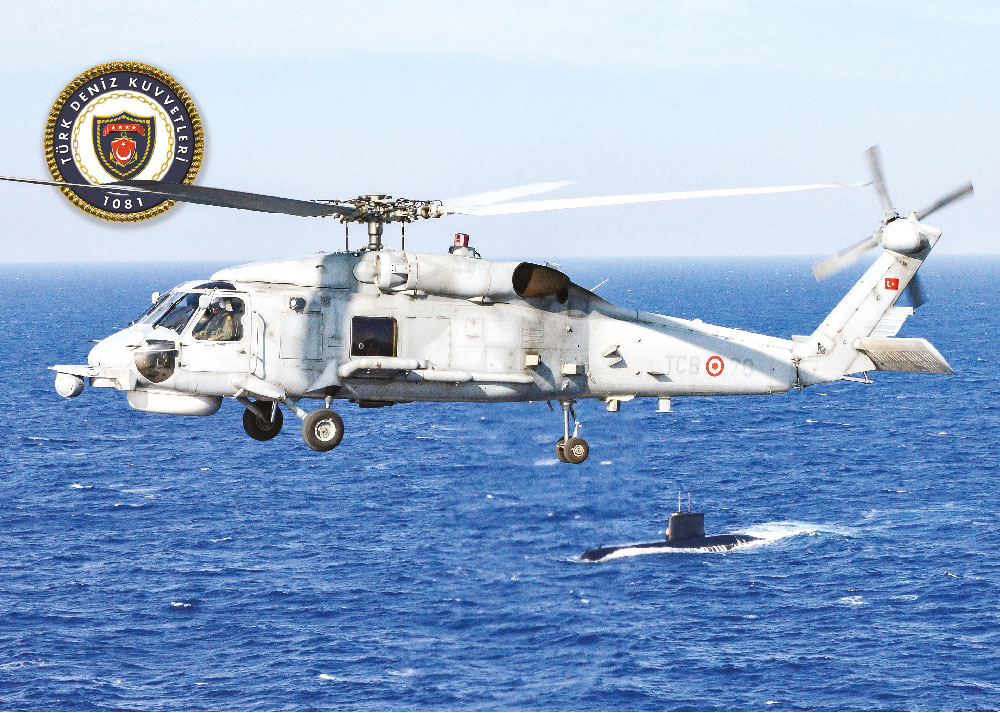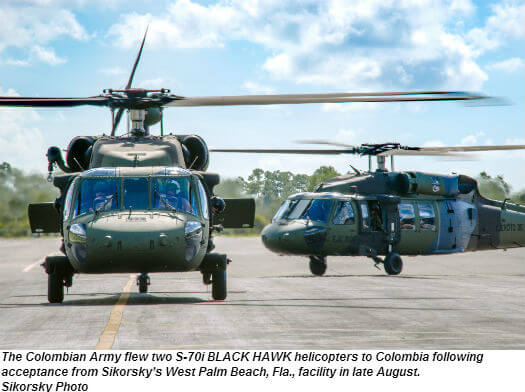A Check out the Sikorsky S 70's Function in Armed forces and Civil Aviation
A Check out the Sikorsky S 70's Function in Armed forces and Civil Aviation
Blog Article
Rotary-Wing Airplane Offering Superior Longevity and Accuracy Engineering
In the realm of air travel, rotary-wing airplane have long been recognized for their unique capacities in various operational environments. From military missions to noncombatant applications, the development of rotary-wing innovation has actually led the way for machines that offer unparalleled resilience and accuracy engineering. Through innovations in products and building methods, coupled with advanced trip control systems, these airplanes have actually come to be crucial devices for tasks that demand both robustness and precision. As we explore the intricate balance in between innovation and integrity in rotary-wing airplane, it comes to be obvious that the convergence of cutting-edge modern technology and proven style concepts has actually established a brand-new standard for efficiency and performance in the aerospace sector.
Advancement of Rotary-Wing Innovation
Throughout the history of air travel, the development of rotary-wing modern technology has been a testament to consistent technology and advancement in aeronautical design. From the early days of upright flight with fundamental layouts to the sophisticated helicopters and various other rotary-wing airplane of today, the progression in this field has been exceptional.
In the early 1900s, pioneers like Igor Sikorsky and Juan de la Cierva made substantial strides in rotary-wing technology. Sikorsky's VS-300 helicopter, very first flown in 1939, noted a zero hour in the advancement of sensible rotary-wing aircraft. This success led the method for further advancements in vertical trip abilities.

Today, rotary-wing airplane play essential duties in different sectors, consisting of military operations, emergency clinical services, legislation enforcement, and industrial transportation. The development of rotary-wing technology remains to press the limits of what is feasible in upright flight, making sure that these airplane continue to be indispensable properties in the aviation market.
Materials and Building And Construction Innovations
Demonstrating a blend of cutting-edge materials and precise building methods, rotary-wing airplane have actually gone through substantial advancements in resilience and performance. Among the key developments in products utilized for rotary-wing airplane is the increasing utilization of composite materials. These materials, such as carbon fiber enhanced polymers, provide a high strength-to-weight ratio, enhancing both the structural stability and overall efficiency of the aircraft. In addition, advancements in making processes have permitted even more intricate and precise construction of rotary-wing elements, adding to improved the rules of aerodynamics and efficiency.
Moreover, the combination of advanced finishings and surface treatments has actually played a vital duty in boosting the longevity of rotary-wing airplane. These layers supply protection versus deterioration, abrasion, and extreme weather, extending the lifespan of the aircraft and decreasing upkeep needs.
In terms of construction developments, additive manufacturing, also called 3D printing, has revolutionized the manufacturing of complex elements for rotary-wing airplane. This modern technology enables for rapid prototyping and personalization, leading to quicker development cycles and lowered expenses. Overall, the continual evolution of learn the facts here now materials and building and construction techniques is driving the abilities and efficiency of rotary-wing airplane to new heights.
Precision Trip Control Equipment

The combination of GPS technology further improves the precision and integrity of these systems, permitting accurate navigating, waypoint monitoring, and automated trip control. sikorsky s 70. This degree of precision not just improves the safety of rotary-wing operations but additionally enhances overall functional effectiveness and goal efficiency
Moreover, the continuous improvements in fabricated intelligence and artificial intelligence have helped with the advancement of autonomous trip capacities within Accuracy Trip Control Systems. This makes it possible for rotary-wing aircraft to perform complicated goals with unmatched precision and consistency, making them important properties in a wide variety of applications, consisting of armed forces procedures, search and rescue missions, and airborne photography.
Durability in Challenging Environments
Popular functional settings, rotary-wing aircraft show exceptional strength and effectiveness, making sure optimum performance under difficult ecological conditions. These aircraft are created to hold up against a variety of ecological aspects, consisting of extreme temperatures, high winds, and harsh surface, making them fit for different objectives in varied landscapes.
One key factor contributing to the resilience of rotary-wing aircraft is their sturdy construction. These aircraft are developed utilizing high-grade products and progressed design strategies to enhance their structural integrity and reliability. Additionally, components such as rotor blades, engine systems, and landing equipment continue reading this are meticulously designed to withstand the tensions and strains encountered throughout operations in challenging settings.
In addition, rotary-wing airplane are furnished with advanced onboard systems that keep an eye on performance metrics in real-time, allowing for proactive upkeep and very early detection of potential concerns - sikorsky s 70. This aggressive approach helps prevent unanticipated failings and ensures the ongoing airworthiness of the aircraft popular operational setups. In general, the toughness of rotary-wing airplane in difficult environments is a testimony to their remarkable engineering and style, making them vital assets for various mission-critical operations
Upkeep and Reliability Specifications
The adherence to strict upkeep and integrity requirements is critical in guaranteeing the ideal performance and safety and security of rotary-wing aircraft. Regular upkeep checks, conducted by licensed technicians, are important to recognize and address any kind of potential concerns before they jeopardize the airplane's performance. These checks incorporate an extensive exam of all vital parts, including the engine, blades system, avionics, and hydraulic systems, to guarantee that they are in prime functioning condition.
Additionally, adherence to set up maintenance intervals based on producer standards is crucial for maintaining the airplane's reliability. This positive technique helps avoid unanticipated breakdowns and makes sure that the airplane continues to be airworthy for its intended objectives. Furthermore, the execution of robust reliability requirements, such as regular part screening and replacement based upon predetermined lifecycles, even more improves the airplane's stability.
Conclusion

In conclusion, the developments in rotary-wing airplane modern technology have actually brought about superior sturdiness and precision design. With cutting-edge materials and building methods, in addition to accuracy trip control systems, these airplane can operate in difficult atmospheres with enhanced dependability. The maintenance and dependability standards guarantee that these rotary-wing aircraft continue to carry out at their finest, making them vital possessions for various industries.
Demonstrating a fusion of sophisticated products and specific building methods, rotary-wing aircraft have actually undertaken considerable improvements in toughness and performance. One of the key innovations in products utilized for rotary-wing aircraft is the increasing application of composite products.With precise focus to information and advanced technical combination, rotary-wing aircraft have actually welcomed Accuracy Flight Control Equipment as a foundation of their operational quality. In general, the durability of rotary-wing airplane in difficult settings is a testimony to their exceptional design and style, making them indispensable possessions for various mission-critical my latest blog post operations.
In final thought, the advancements in rotary-wing aircraft innovation have led to premium durability and accuracy engineering.
Report this page